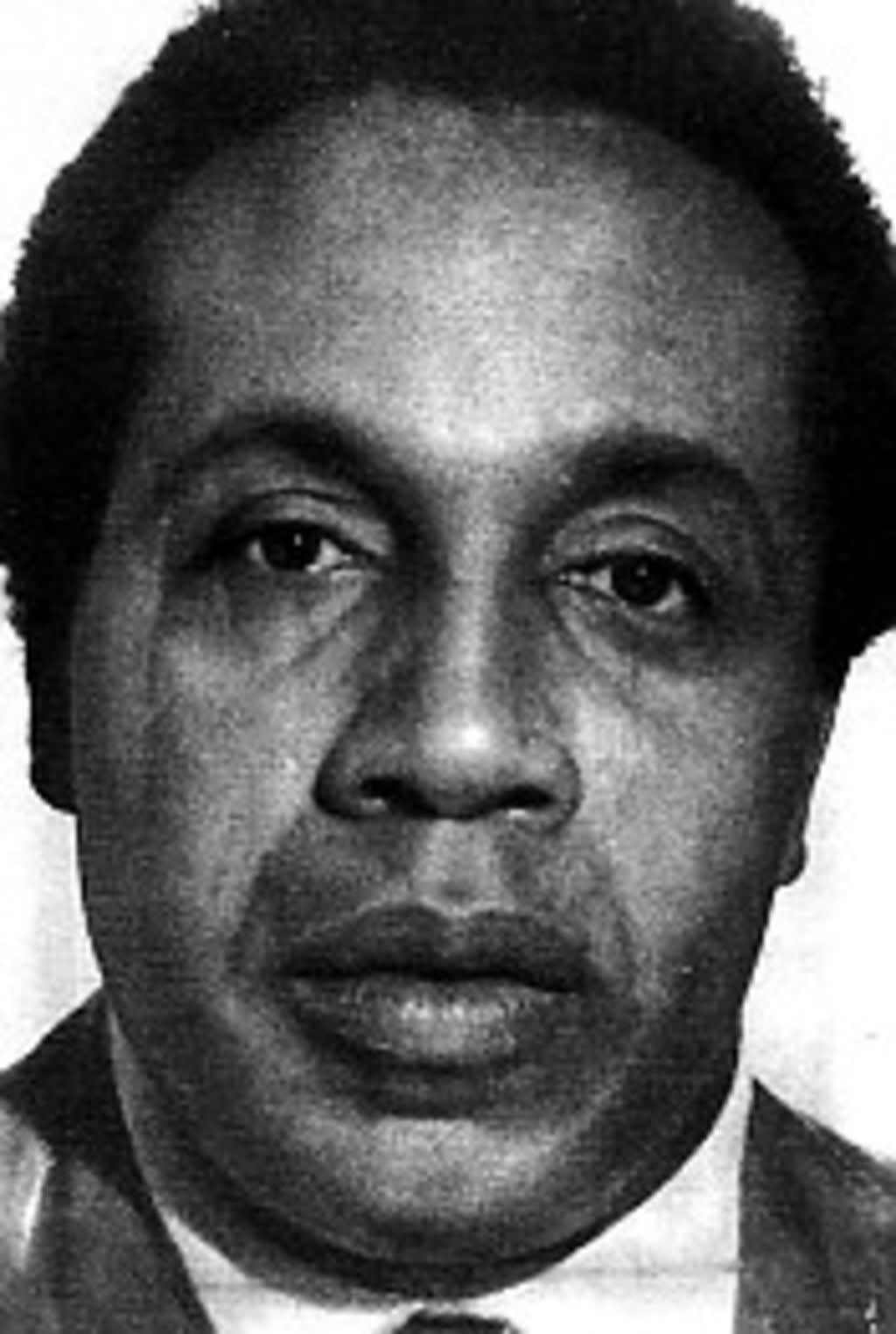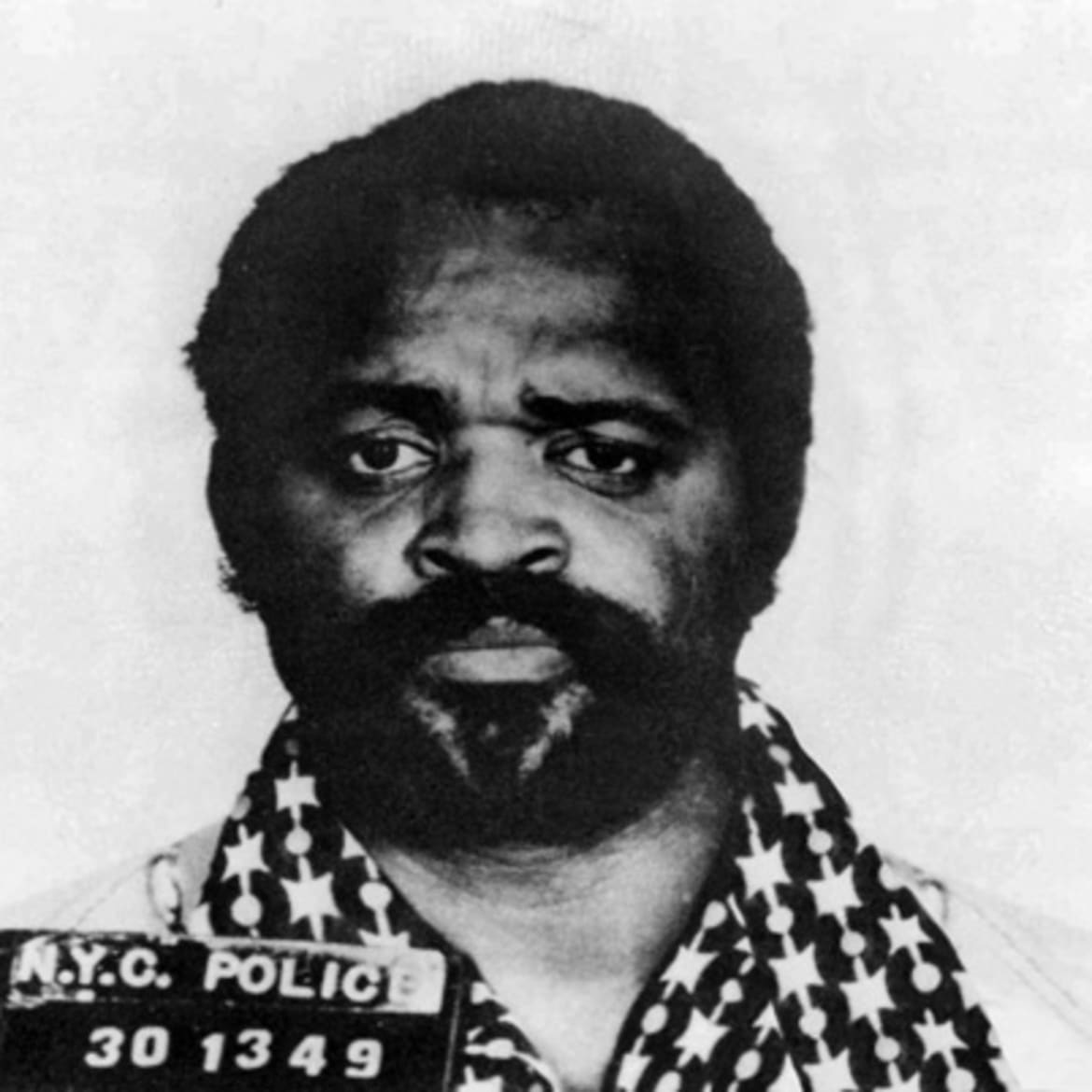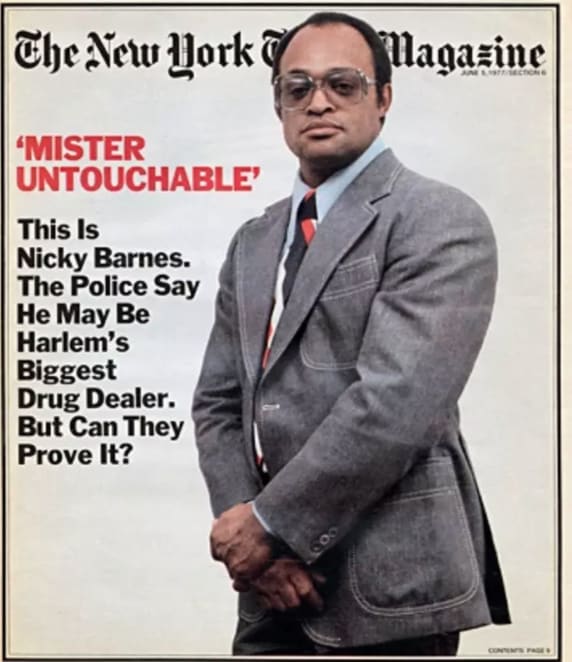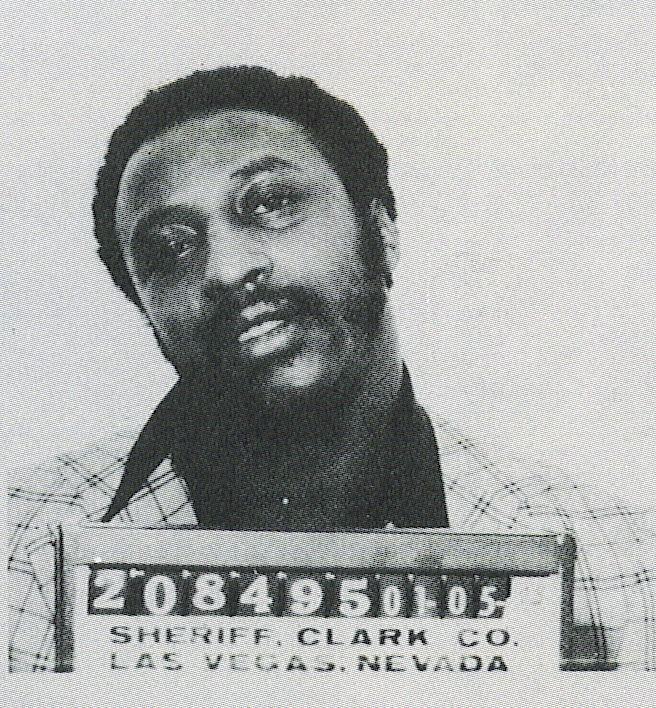The Long Rise and Fast Fall of New York’s Black Mafia
The Long Rise and Fast Fall of New York’s Black Mafia
‘You can’t become known as a gangster. Once you’re known you’re finished. The old-timers understood that.’
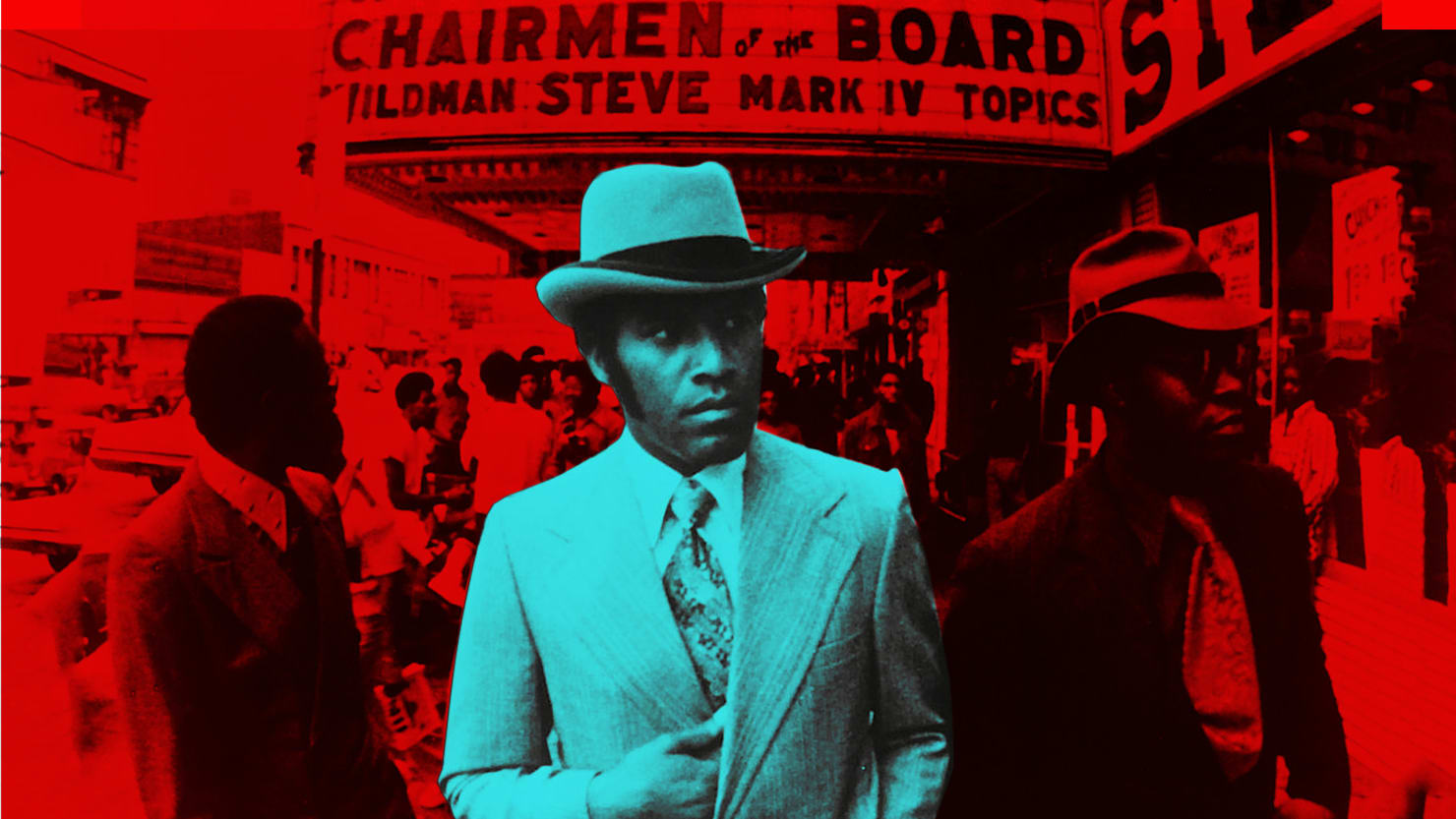
Photo Illustration by The Daily Beast
In 1974, it looked like the Godfather model was fading amid indictments and hits on its leaders and as middle-class white residents poured out of America’s inner cities.
That was when Francis A.J. Ianni published Black Mafia: Ethnic Succession in Organized Crime, expanding on the idea at the end of A Family Business, his anthropological study of a Mafia family two years earlier, that it was a natural progression in the order of crime that the Italians “must weaken and give way to the next wave of aspiring ethnics, just as the Jews and Irish did before them.”
Legendary New York journalist Pete Hamill blurbed the book, calling it “nothing less than a major ethnic succession to power, as Italian-Americans and the remaining pockets of non-Italians give way to the new rulers of the Mob… It is no accident, of course, that now that Blacks are beginning to run numbers, we are hearing more calls for legalization…”
I asked Hamill this year whatever happened to the Black Mafia. He laughed: “Well, I guess I didn’t see the Colombian and Russian mobs coming.”
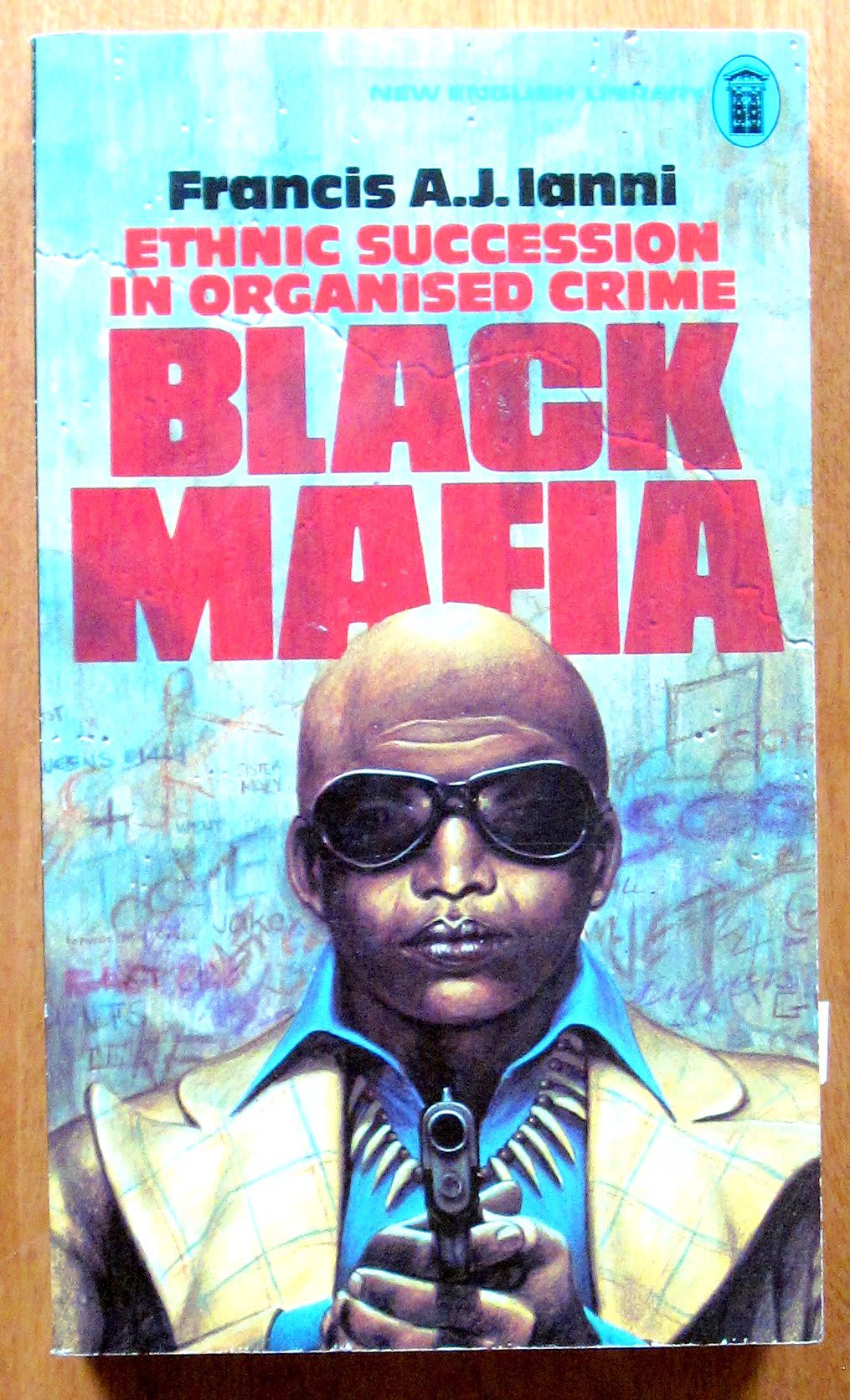
In fairness to Hamill, no one in 1974 predicted that those two groups would rise to such power, just as few foresaw how the Black Mafia would be destroyed from within because it based its business model on drug importing and dealing. That game can never last long because it always brings the federal authorities in, and once the feds are in, everyone eventually goes down. The old saw that you can’t fight City Hall is not really true—what you can’t fight is the FBI and RICO indictments.
“In the early 1970s black gangsters were caught in a very weird moment,” Hamill told me.
The old-line Italians were going to jail or getting killed like Joey Gallo in 1972 or shot and left for a vegetable like Joe Colombo in 1971. The Italian Mafia was smart with that Colombo hit as they got a black man, Jerome Johnson, to do the job. Of course, Johnson was killed at the scene by Colombo’s men, but it was a good ruse allegedly ordered by Joey Gallo, who as I said met his maker eight months later for the Colombo hit and other sins against the Mafia powers that be…
With all the social change in the country during and after the Vietnam War and all their infighting, the Italians started to lose the neighborhoods they had once run. Old Italian strongholds were being lost in Brooklyn, East Harlem, towns in New Jersey, Philadelphia, Los Angeles, and Chicago. They were being overtaken by black gangsters simply because of the number of blacks moving into those neighborhoods. That was going on all through the country.
But the black gangsters had no real plan—no family long-term goal—as to what they were going to do beyond the moment. The Black Mafia became an ad hoc mob and dealt with everything in the moment. They had no five-year plan like real successful mobsters like Meyer Lansky and Frank Costello had. You cannot run a successful organized crime racket without a plan…
In 1976 or so the biggest black gangster of that time, Leroy “Nicky” Barnes, became such a flamboyant figure that he was known to everyone. The New York Times did a profile on the guy [“Mister Untouchable”] that he sat down for. You can’t have the Times write about you if you are a gangster and expect to get away with anything.
Successful gangsters cannot be known. Look at Paul Castellano. No matter what you think of the guy, no one knew who he was until John Gotti had him killed in 1985. He went years with no one knowing a thing about him. Then Gotti knocked him off and took over the headlines and got himself thrown into prison until he died a broken and bitter man in 2002. Gotti showed off and got the nickname of the ‘Teflon Don.’ He broke the old Italian code of keeping a low profile, and the feds made him pay for it.
He should have learned from Nicky Barnes that you can’t be a successful mobster and advertise it by driving around in flashy cars and wearing designer suits. You have to work literally in the underworld to succeed. You can’t become known as a gangster. Once you’re known, you’re finished. The old-timers understood that. Probably the most successful black gangster from the old days was Bumpy Johnson, but the black gangsters after him didn’t have any continuity. Bumpy Johnson left a hole and no tradition was passed down.
— Pete Hamill
Ellsworth Raymond “Bumpy” Johnson ruled the Harlem underworld from 1932 to 1968, and inspired fame and fear that endured even after his death. When Gordon Parks released Shaft three years later, the villain modeled on him, played by Moses Gunn, was renamed Bumpy Jonas. Johnson still had a lot of tough friends and family and Parks did not want trouble. Laurence Fishburne captured Bumpy Johnson’s suave character twice, in 1984’s The Cotton Club and 1997’s Hoodlum. Fishburne had the Robin Hood from the ’hood swagger that the real Bumpy Johnson was known for.
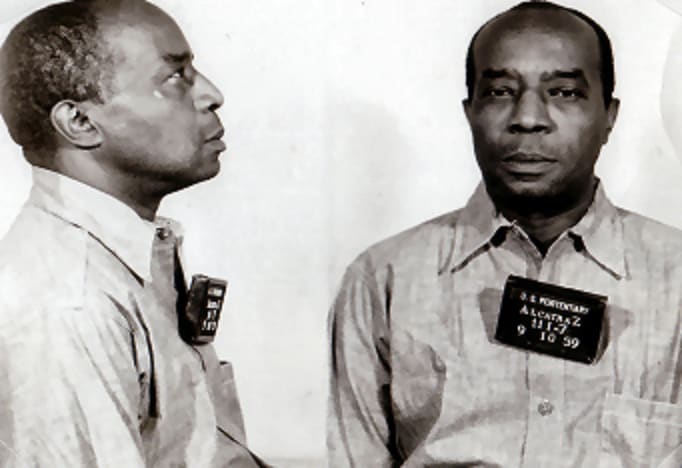
Bumpy Johnson
Many claimed it was Johnson who had saved the numbers racket from being taken over by white gangsters, who’d derided it during Prohibition as a “poor man’s policy” or “ni**er pool.”
But as word got out that some of the black underworld leaders were getting very rich running this venture, the white mobsters took a second look and then made their move. The blacks were able to keep them at bay until “Black Wednesday” hit New York City in 1931, when the number 527 was so heavily played it broke the bank at a number of policy books.
The Harlem number houses then went to Jewish gangster Dutch Schultz for a loan. Schultz, who saw the end coming for Prohibition and bootleg booze, bailed them out in exchange for control of the game.
Most of the houses caved, not least because Schultz hired a black thug named William “Bub” Hewlett and a squad of goons to break heads and bend knees for The Combination, as the game was known on his watch. One strong and tough woman, Madam Saint Claire, ran a large numbers book that refused to join up with Schultz. She hired a little-known 26-year-old just out of prison named Bumpy Johnson to raise a gang at her expense and fight off Hewlett’s crew.
Bumpy and Bub Hewlett took turns shooting and robbing each other through Harlem. The street war ended in 1935, when Schultz was gunned down in a Newark steakhouse for other foul deeds deemed unacceptable by New York’s crime leaders. The new syndicate let the blacks in Harlem keep the numbers racket as long as they paid 1 percent off the top. In 1935 law enforcement officials estimated that the numbers racket was a $100 million racket.
Bumpy Johnson now had the respect of the black gangsters in Harlem and the new syndicate run by the Italians. He became what was termed a persuader—a leg-breaker and a hit man to whoever was paying the highest dollar, and his services were in high demand. Bumpy was one of the few blacks the mob boys trusted, and few in Harlem had any truck with him, because if they did they weren’t around very long.
Johnson was born in 1906 in Charleston, South Carolina, but left the South as a young boy to live in New York with an older sister. The streets of Harlem took him in, and by 15 he was a second-story burglar before quickly graduating to armed robberies. His sister knew nothing of his antics, as he was able to graduate from Boys High and went on to do one semester at City College. His formal education ended when he was busted for a burglary at 19. He did seven years bouncing around the prison system and became known as “The Professor” because he spent most of his time reading history and philosophy and becoming a master at chess. Over the course of his life, he put in over 26 years in prison, and every time he went away he studied every book he could get his hands on.
When he was released from what turned out to be his final sentence in 1963, Bumpy said he was turning legit, and to prove it he opened the Palmetto Exterminating Business on Second Avenue. He settled down with his wife and claimed he wanted to lead a quiet life. In 1967, federal agents acting on a stool pigeon’s tip followed Bumpy in his car. He saw them in his rearview mirror and took them on a wild car chase through Manhattan and into Queens. The feds nabbed him on the Van Wyck Expressway. He was arrested and then indicted by a federal grand jury for drug dealing even though no drugs were found in his car. Bumpy made the $50,000 bail and awaited another trial.
He would never get it. On July 7, 1968, Bumpy was eating at Wells Restaurant in Harlem with Frank Lucas (more on him in a bit) when he keeled over and died of a heart attack.
Two months after Martin Luther King Jr. was assassinated, the Amsterdam Newsproclaimed: “BUMPY’S DEATH MARKS END OF AN ERA.”
His funeral was attended by hundreds of mourners, and Rev. John J. Johnson noted that Bumpy was “… not a coward and he never betrayed a friend. He had good manners and was generous to a fault. He decided early in life not to be a clown, a flunky, or a beggar… Maybe there was no other way for him to be a man…”
As his wife and children left the church to bury Bumpy up in Woodlawn Cemetery, an unnamed black police sergeant told an Amsterdam News reporter: “He was a hood, a thug, a man who served time for trafficking in narcotics… He was no good in my mind in that this was what he made his money.”
The late, great Jimmy Breslin knew Johnson from decades chasing stories on the streets of Harlem. He knew the bad things Bumpy had done but told me he couldn’t help but like the man.
“I know the man was a gangster, but he had style. He only hurt people that probably earned his wrath.”
Breslin told me that in 1965, after his younger sister got a job as a school teacher in Harlem, he’d called Bumpy to ask if he could look out for her and make sure she stayed safe.
“So my sister comes home one day and tells me how great it is up in Harlem and how nice and polite the kids were. She told me that the kids would bring her apples like they were in some country school from the 1930s. I had to laugh at that one. I knew Bumpy talked to the kids and gave them apples to give to her. She had to be the safest person in Harlem. If Bumpy Johnson gave you protection in Harlem, you could walk around with a wad of hundreds in your mitts and no one would rob you.”
Bumpy even checked on her himself, Breslin recalled:
“She told me how this nice older man came by and that he was a friend of my brother, Jimmy, and any sister of Jimmy was a friend of his. He introduced himself as Ellsworth. My sister told him she that she got the job because the federal government hired her in an initiative to get more teachers into inner-city schools. Johnson told her that he too had also worked for the federal government for many years. She asked what did he do and he laughed and told her he was a guest at many federal prisons for far too many years.”
Breslin laughed. “Back then it was a pleasure to cover criminals like Johnson. They weren’t into drugs and their crime was more self-contained with gambling and loan sharking. Once the drugs took over the crime scene, it wasn’t as much fun anymore.”
In 2007, the film American Gangster told the allegedly true story of Harlem legend Frank Lucas—the man who says Bumpy Johnson died in his arms at Wells Restaurant. I say allegedly because you have to take anything a drug dealer says with a fair amount of skepticism, and the movie is based on the tales that Lucas has spun through the years. I would bet not all of his stories are true, but the truth never got in the way of a Hollywood movie.
The Long Rise and Fast Fall of New York’s Black Mafia
‘You can’t become known as a gangster. Once you’re known you’re finished. The old-timers understood that.’

Photo Illustration by The Daily Beast
In 1974, it looked like the Godfather model was fading amid indictments and hits on its leaders and as middle-class white residents poured out of America’s inner cities.
That was when Francis A.J. Ianni published Black Mafia: Ethnic Succession in Organized Crime, expanding on the idea at the end of A Family Business, his anthropological study of a Mafia family two years earlier, that it was a natural progression in the order of crime that the Italians “must weaken and give way to the next wave of aspiring ethnics, just as the Jews and Irish did before them.”
Legendary New York journalist Pete Hamill blurbed the book, calling it “nothing less than a major ethnic succession to power, as Italian-Americans and the remaining pockets of non-Italians give way to the new rulers of the Mob… It is no accident, of course, that now that Blacks are beginning to run numbers, we are hearing more calls for legalization…”
I asked Hamill this year whatever happened to the Black Mafia. He laughed: “Well, I guess I didn’t see the Colombian and Russian mobs coming.”

In fairness to Hamill, no one in 1974 predicted that those two groups would rise to such power, just as few foresaw how the Black Mafia would be destroyed from within because it based its business model on drug importing and dealing. That game can never last long because it always brings the federal authorities in, and once the feds are in, everyone eventually goes down. The old saw that you can’t fight City Hall is not really true—what you can’t fight is the FBI and RICO indictments.
“In the early 1970s black gangsters were caught in a very weird moment,” Hamill told me.
The old-line Italians were going to jail or getting killed like Joey Gallo in 1972 or shot and left for a vegetable like Joe Colombo in 1971. The Italian Mafia was smart with that Colombo hit as they got a black man, Jerome Johnson, to do the job. Of course, Johnson was killed at the scene by Colombo’s men, but it was a good ruse allegedly ordered by Joey Gallo, who as I said met his maker eight months later for the Colombo hit and other sins against the Mafia powers that be…
With all the social change in the country during and after the Vietnam War and all their infighting, the Italians started to lose the neighborhoods they had once run. Old Italian strongholds were being lost in Brooklyn, East Harlem, towns in New Jersey, Philadelphia, Los Angeles, and Chicago. They were being overtaken by black gangsters simply because of the number of blacks moving into those neighborhoods. That was going on all through the country.
But the black gangsters had no real plan—no family long-term goal—as to what they were going to do beyond the moment. The Black Mafia became an ad hoc mob and dealt with everything in the moment. They had no five-year plan like real successful mobsters like Meyer Lansky and Frank Costello had. You cannot run a successful organized crime racket without a plan…
In 1976 or so the biggest black gangster of that time, Leroy “Nicky” Barnes, became such a flamboyant figure that he was known to everyone. The New York Times did a profile on the guy [“Mister Untouchable”] that he sat down for. You can’t have the Times write about you if you are a gangster and expect to get away with anything.
Successful gangsters cannot be known. Look at Paul Castellano. No matter what you think of the guy, no one knew who he was until John Gotti had him killed in 1985. He went years with no one knowing a thing about him. Then Gotti knocked him off and took over the headlines and got himself thrown into prison until he died a broken and bitter man in 2002. Gotti showed off and got the nickname of the ‘Teflon Don.’ He broke the old Italian code of keeping a low profile, and the feds made him pay for it.
He should have learned from Nicky Barnes that you can’t be a successful mobster and advertise it by driving around in flashy cars and wearing designer suits. You have to work literally in the underworld to succeed. You can’t become known as a gangster. Once you’re known, you’re finished. The old-timers understood that. Probably the most successful black gangster from the old days was Bumpy Johnson, but the black gangsters after him didn’t have any continuity. Bumpy Johnson left a hole and no tradition was passed down.
— Pete Hamill
Ellsworth Raymond “Bumpy” Johnson ruled the Harlem underworld from 1932 to 1968, and inspired fame and fear that endured even after his death. When Gordon Parks released Shaft three years later, the villain modeled on him, played by Moses Gunn, was renamed Bumpy Jonas. Johnson still had a lot of tough friends and family and Parks did not want trouble. Laurence Fishburne captured Bumpy Johnson’s suave character twice, in 1984’s The Cotton Club and 1997’s Hoodlum. Fishburne had the Robin Hood from the ’hood swagger that the real Bumpy Johnson was known for.

Bumpy Johnson
Many claimed it was Johnson who had saved the numbers racket from being taken over by white gangsters, who’d derided it during Prohibition as a “poor man’s policy” or “ni**er pool.”
But as word got out that some of the black underworld leaders were getting very rich running this venture, the white mobsters took a second look and then made their move. The blacks were able to keep them at bay until “Black Wednesday” hit New York City in 1931, when the number 527 was so heavily played it broke the bank at a number of policy books.
The Harlem number houses then went to Jewish gangster Dutch Schultz for a loan. Schultz, who saw the end coming for Prohibition and bootleg booze, bailed them out in exchange for control of the game.
Most of the houses caved, not least because Schultz hired a black thug named William “Bub” Hewlett and a squad of goons to break heads and bend knees for The Combination, as the game was known on his watch. One strong and tough woman, Madam Saint Claire, ran a large numbers book that refused to join up with Schultz. She hired a little-known 26-year-old just out of prison named Bumpy Johnson to raise a gang at her expense and fight off Hewlett’s crew.
Bumpy and Bub Hewlett took turns shooting and robbing each other through Harlem. The street war ended in 1935, when Schultz was gunned down in a Newark steakhouse for other foul deeds deemed unacceptable by New York’s crime leaders. The new syndicate let the blacks in Harlem keep the numbers racket as long as they paid 1 percent off the top. In 1935 law enforcement officials estimated that the numbers racket was a $100 million racket.
Bumpy Johnson now had the respect of the black gangsters in Harlem and the new syndicate run by the Italians. He became what was termed a persuader—a leg-breaker and a hit man to whoever was paying the highest dollar, and his services were in high demand. Bumpy was one of the few blacks the mob boys trusted, and few in Harlem had any truck with him, because if they did they weren’t around very long.
Johnson was born in 1906 in Charleston, South Carolina, but left the South as a young boy to live in New York with an older sister. The streets of Harlem took him in, and by 15 he was a second-story burglar before quickly graduating to armed robberies. His sister knew nothing of his antics, as he was able to graduate from Boys High and went on to do one semester at City College. His formal education ended when he was busted for a burglary at 19. He did seven years bouncing around the prison system and became known as “The Professor” because he spent most of his time reading history and philosophy and becoming a master at chess. Over the course of his life, he put in over 26 years in prison, and every time he went away he studied every book he could get his hands on.
When he was released from what turned out to be his final sentence in 1963, Bumpy said he was turning legit, and to prove it he opened the Palmetto Exterminating Business on Second Avenue. He settled down with his wife and claimed he wanted to lead a quiet life. In 1967, federal agents acting on a stool pigeon’s tip followed Bumpy in his car. He saw them in his rearview mirror and took them on a wild car chase through Manhattan and into Queens. The feds nabbed him on the Van Wyck Expressway. He was arrested and then indicted by a federal grand jury for drug dealing even though no drugs were found in his car. Bumpy made the $50,000 bail and awaited another trial.
He would never get it. On July 7, 1968, Bumpy was eating at Wells Restaurant in Harlem with Frank Lucas (more on him in a bit) when he keeled over and died of a heart attack.
Two months after Martin Luther King Jr. was assassinated, the Amsterdam Newsproclaimed: “BUMPY’S DEATH MARKS END OF AN ERA.”
His funeral was attended by hundreds of mourners, and Rev. John J. Johnson noted that Bumpy was “… not a coward and he never betrayed a friend. He had good manners and was generous to a fault. He decided early in life not to be a clown, a flunky, or a beggar… Maybe there was no other way for him to be a man…”
As his wife and children left the church to bury Bumpy up in Woodlawn Cemetery, an unnamed black police sergeant told an Amsterdam News reporter: “He was a hood, a thug, a man who served time for trafficking in narcotics… He was no good in my mind in that this was what he made his money.”
The late, great Jimmy Breslin knew Johnson from decades chasing stories on the streets of Harlem. He knew the bad things Bumpy had done but told me he couldn’t help but like the man.
“I know the man was a gangster, but he had style. He only hurt people that probably earned his wrath.”
Breslin told me that in 1965, after his younger sister got a job as a school teacher in Harlem, he’d called Bumpy to ask if he could look out for her and make sure she stayed safe.
“So my sister comes home one day and tells me how great it is up in Harlem and how nice and polite the kids were. She told me that the kids would bring her apples like they were in some country school from the 1930s. I had to laugh at that one. I knew Bumpy talked to the kids and gave them apples to give to her. She had to be the safest person in Harlem. If Bumpy Johnson gave you protection in Harlem, you could walk around with a wad of hundreds in your mitts and no one would rob you.”
Bumpy even checked on her himself, Breslin recalled:
“She told me how this nice older man came by and that he was a friend of my brother, Jimmy, and any sister of Jimmy was a friend of his. He introduced himself as Ellsworth. My sister told him she that she got the job because the federal government hired her in an initiative to get more teachers into inner-city schools. Johnson told her that he too had also worked for the federal government for many years. She asked what did he do and he laughed and told her he was a guest at many federal prisons for far too many years.”
Breslin laughed. “Back then it was a pleasure to cover criminals like Johnson. They weren’t into drugs and their crime was more self-contained with gambling and loan sharking. Once the drugs took over the crime scene, it wasn’t as much fun anymore.”
In 2007, the film American Gangster told the allegedly true story of Harlem legend Frank Lucas—the man who says Bumpy Johnson died in his arms at Wells Restaurant. I say allegedly because you have to take anything a drug dealer says with a fair amount of skepticism, and the movie is based on the tales that Lucas has spun through the years. I would bet not all of his stories are true, but the truth never got in the way of a Hollywood movie.
